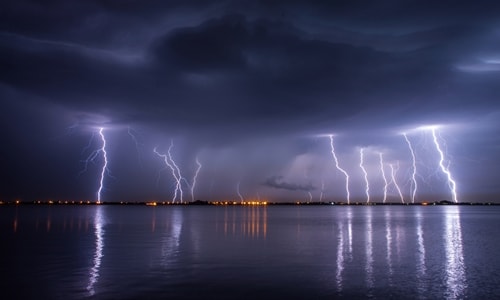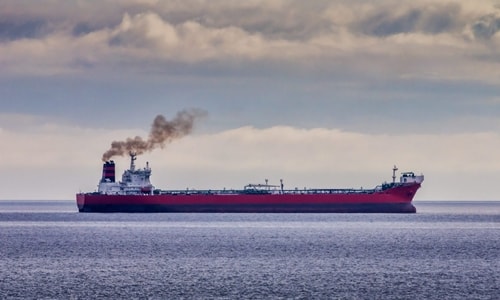Emissions make storms more dangerous
Emissions make storms more dangerous. Emissions from ships at sea, in particular, cause storms to bring more lightning than expected.
 |
| More thunderstorms due to emissions from human activities. Photo: Farmers' Almanac. |
US scientists have found that ship emissions are causing more thunderstorms, Popular Science reported today. In areas with busy maritime activity, the number of thunderstorms is twice as high as normal.
The injection of small particles into the atmosphere can create thunderstorms and lightning. Lightning forms in clouds containing ice, liquid water, and moving air currents. As heavy ice particles, called flint, move downward due to gravity, smaller snow particles move upward with the air currents, colliding with each other and creating an electrical discharge.
Soft ice is generally negatively charged and snowflakes are positively charged. They collide and create a discharge, which is what produces lightning. Lightning is more likely to occur if ideal conditions, i.e. clouds containing water, ice particles and snow crystals, are present more frequently.
Aerosols are small particles of liquid or solid matter such as water vapor, smoke, dust, which contribute to cloud formation. If the air is too clean, with few aerosols, then cloud particles will also form less.
Clouds become larger and heavier as they absorb water from the surrounding air. This allows them to fall more quickly, creating rain without lightning. In other words, the small particles in the air are what cause thunderstorms to produce more lightning.
Scientists are conducting research to find out how much the activities that create these particles, such as cars, ships, and factories emitting gases, affect the formation of lightning. In 2004, Robert Holzworth at the University of Washington began creating a sensor system called the Global Lightning Positioning System.
 |
| Ship exhaust adds particulate matter to the air. Photo: Hoyer Motors. |
“Every time there’s lightning, there’s interference in the radio waves in the atmosphere,” says Joel Thornton, an atmospheric scientist at the University of Washington in Seattle. “If you put sensors in places where they can detect interference, and they detect it at different times, you can analyze it, compare it, and pinpoint where the lightning happened.”
Katrina Virts, a researcher at NASA's Marshall Space Flight Center, created a kind of lightning map after studying this data.
“Virts pointed out two lines that looked like shipping lanes,” Thornton said. They quickly discovered that lightning was more frequent in shipping lanes.
While studying aerosols and their relationship to cloud and lightning formation, Thornton realized that the catalyst was particles from ship exhaust. On land, there are many particles from forest fires, dust, and pollution. But there are not many particles at sea.
Pumping more particulate matter into a small area of normally clean air makes storms more dangerous with more lightning.
Human pollution not only has long-term effects on the climate, it can also have a direct impact on the weather. “By adding particles from ship emissions to the atmosphere, we could be turning normal rainstorms into thunderstorms,” Thornton said.
According to VNE
| RELATED NEWS |
|---|
